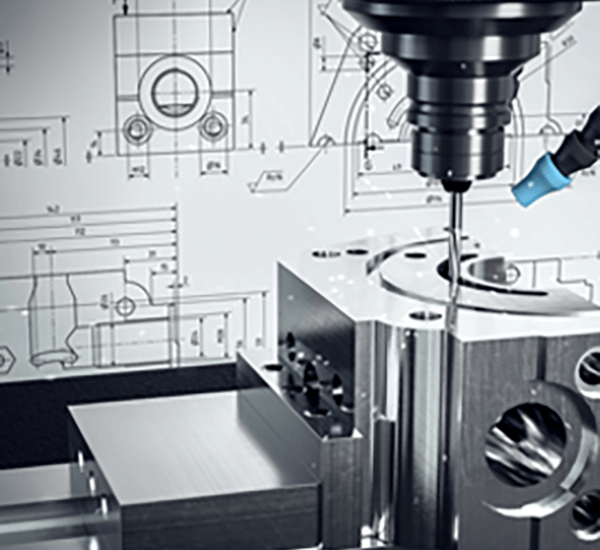
Realizing precise finish on a turned or milled piece is of paramount importance.
- Technical drawings lay out precise surface criteria for components
- Many specifications reference Ra, an average roughness metric, for surface measurement
- Knowing how to read finish callouts is critical for meeting performance goals
- A well-defined surface finish can impact factors such as lubrication, friction, and durability
- It is essential to interpret the specific callout to achieve the desired outcome
CNC Machining — Precision Engineering Explained

CNC machining represents a game-changing method in production through G-code driven routines the hardware sculpts intricate parts accurately.
- The technology facilitates production of complex parts across many materials
- Multifaceted CNC utility supports electronics, automotive, and aerospace production
- Programmed machining assures dependable consistency across manufacturing cycles
From early-stage prototyping through mass manufacturing CNC machining underpins modern fabrication
Comprehending CNC Machine Specifications
Reading machine specs may appear overwhelming initially
In contrast, measured learning and order help you traverse technical specifications
Initiate by spotting principal specs like spindle speed, feed rate, positional accuracy, travel limits, controller
Every listed attribute influences the equipment’s operational capacity.
For example a higher spindle speed is suitable for softer materials while a faster feed rate is essential for increased production.
Comprehending those interactions assists in picking the proper CNC for tasks
It’s wise to study manufacturer documentation comprehensively.
Maker resources usually present informative direction and demystify jargon
What is a CNC Machine? A Comprehensive Guide
G-code driven machining centers are computer-run systems for precise automated production of varied materials They process programmed G-code to regulate toolpaths and actuator behavior.
- Some types of CNC machines include milling machines lathes routers and plasma cutters
- CNC machining processes are highly versatile and can be used to work with a wide range of materials including metals plastics wood and composites
- Furthermore CNC machines allow for rapid prototyping and low-volume production runs making them valuable assets for small businesses and research centers
Computer Numerical Control Machines: An Overview
They embody an integration of hardware accuracy and advanced software regulation Automated tools implement code to produce elementary parts and sophisticated assemblies Essential concept transposes digital designs into manufactured reality.
- CNC fabrication
- Digital design integration
It requires coordinated toolpath steps instructed by G-code Skilled staff determine cutting conditions, observe operations, and verify finished part quality.
Surface Finish Effects in CNC Production
Achieving the desired surface finish in CNC machining is crucial It strongly influences part functionality and visual appeal Stock properties, cutting settings, and finishing operations determine surface result.
A polished finish improves wear resistance whereas coarse texture can hinder performance Numerical control machining supplies multiple methods and cutters to obtain target textures.
- Including selection of alternative tool profiles |tool materials|speed settings to obtain particular finish
- Also surface treatments such as grinding and polishing can refine textures
Appreciating the link between settings and surface quality helps achieve ideal finishes.
Understanding CNC Machines: A Beginner's Guide
CNC machining is a precise method of manufacturing that employs computer-controlled machinery to shape parts from various materials They interpret digital toolpaths to carve detailed designs reliably Awareness of G-code, tooling, and machine operation aids successful production
CNC applications stretch across aerospace, automotive, medical device, and electronics industries From precision engine parts to detailed injection molds, CNC delivers complex products
Surface Finish Specification Guidelines
Precise surface specification proves essential in CNC machining It makes sure the product satisfies function and aesthetic demands Manufacturers often rely on Ra (roughness average) to represent surface finish Given in microns or thousandths of an inch, the figure measures average surface peaks and valleys.
Balance smoothness needs with intended application when designating finish

For instance a smooth surface finish might be preferred for parts that require tight tolerances or precise alignment
More pronounced surface profiles help applications relying on friction or traction
Include unambiguous roughness values in drawings to specify finish demands Record Ra alongside additional machining recommendations or surface treatments.
Keep in mind clear finish callouts are central to manufacturing success
Varieties of CNC Machines and Capabilities
The world of CNC machining is vast and diverse with a wide array of machines designed to tackle various types of tasks They depend on CAD/CAM instruction to operate cutting tools for efficient part fabrication.
- Drills bore precise holes with controlled feed and speed
- Routers handle flat panel cutting and profiling for non-metal workpieces
- Beam and jet cutting methods enable accurate slicing with differing thermal impacts
Select machinery by weighing material, complexity, and tolerance needs Each type of CNC machine offers unique capabilities making them essential tools in diverse industries from automotive to aerospace.
Attaining Top-tier Surface Finish Through CNC
Realizing premium surface texture is vital and CNC machining supplies tools to accomplish it Through tailored feed rates spindle selection and tool design engineers control surface formation and limit imperfections Moreover premium cutters and correct coolant application enhance surface outcomes Strategic toolpath planning and precise machine adjustments result in superior finish quality.
Programming for Surface Finish in CNC
Managing finish via CNC code is important to secure required surface properties Feed selection spindle rpm and cutter geometry collectively determine texture outcomes Careful selection of these parameters in conjunction with proper lubrication and coolant management can yield a smooth and flawless surface finish.
- Plus regular inspection and maintenance of tools copyright finishing standards Additionally routine tool checks and upkeep maintain consistent finish quality Plus regular inspection and maintenance of tools copyright finishing standards
- To optimize surface finish programmers should consider factors like material type desired surface roughness and the application requirements
- Using CAM simulation lets you preview and tweak toolpaths to lower defect risk
- Furthermore regular tool maintenance and inspection are essential for ensuring a consistent and high-quality surface finish over time
